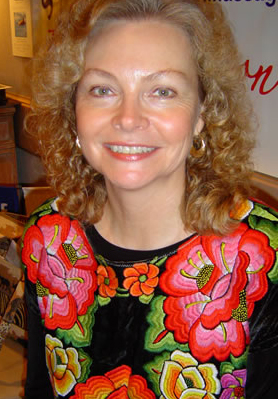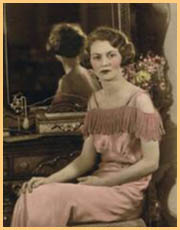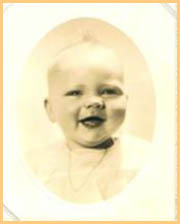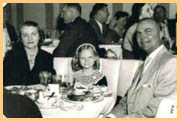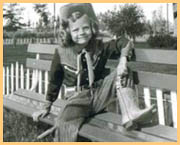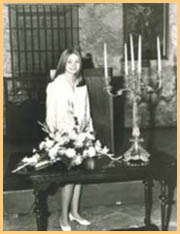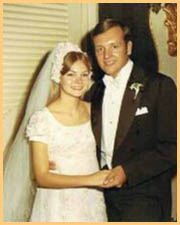UC Press gave me a contract in 1987, and waited patiently for the final manuscript, which I finally sent in three years, six courses (I was teaching part-time), nine articles, hundreds of lullabies, and thousands of laundry loads later. I remain deeply grateful to my UC Press editor, Stanley Holwitz, for his patience and his enduring support and friendship, and to my children, Peyton and Jason, for their tolerance of my always being late to pick them up at school and the day care center. (I am sure that the fact that my son is always on time for everything is a lasting legacy of my lateness, which he continues to bring up whenever he gets a chance!)
The Emergence of my Interests in Midwives, Holistic Physicians, Futures Planning, and Aerospace Engineers
After the book came out, speaking invitations came pouring in. Through the talks I gave at many childbirth and midwifery conferences, I discovered midwives in their numbers and became fascinated with these amazing women who give such nurturant and loving care to women during their births, at home or in the hospital. So, while continuing my research on women, I began also to study midwives—their practices, ideologies, politics, and identities in a changing world. Many of the articles I wrote about them are available on this website, and my book on American midwives (Mainstreaming Midwives: The Politics of Change) came out from Routledge in 2006.
Invited one year to speak to the American Holistic Medical Association about birth, I immediately found myself fascinated by the holistic physicians surrounding me at that conference—why, after so many years of medical training, would they choose to “shift paradigms” and learn other healing modalities? I pulled out my tape recorder and did my first set of seven interviews on the spot. (Anthropology is so cool—it gives you the tools to study anything that turns you on!) When I met Gloria St. John, a homeopath and former hospital administrator who had been running support groups for holistic physicians in the Bay Area, I knew we should do this one together.
Our forty interviews with holistic docs led to a book we are very proud of, From Doctor to Healer: The Transformative Journey. It identifies the three paradigms of health care across which physicians shift—the technocratic, humanistic, and holistic models; describes the catalysts that spark them to take this transformative journey; and illustrates how they practice after they have completed their journey and integrated holistic ideologies and modalities with what they choose to retain of traditional medicine. This book finds its best use in the alternative medicine courses taught in medical school and with physicians dissatisfied with practicing technocratic medicine who want more ample healing abilities. Many docs who have read it have written to express their appreciation (“Finally I understand what happened to me in medical school, why it made me feel so limited, and what I can do about it!” I continue to receive very gratifying letters from my former medical students at Rice Univerity saying that my teachings were “a gold nugget that they carried in their pockets all through medical school” and made them better doctors in the end.)
I taught medical anthropology at Rice University several times, to replace my dear friend Nia Georges when she went on sabbatical. The chair of the Rice Anthropology Department, George Marcus, was in the process of doing a book called Corporate Futures, and invited me to participate. Looking to broaden my ethnographic and knowledge base, I undertook a study of a group of aerospace engineers (the group was called SATWG—Strategic Avionics Technology Working Group, later changed to ATWG), focusing on their “vision for commercializing outer space.” At first I envisioned giant McDonalds orbiting the planet, but soon found that they meant more launch vehicles to get more satellites into outer space—it was all about global communication systems. Fascinated by their own fascination with technology (I asked one engineer, “What are the limits of these technologies” and he answered, “There are no limits!!), I wrote an ethnography of this group and its visions (“The SATWG Stories,” available on this website).
In the same vein, I conducted an extensive interview with Betty Sue Flowers about her directorship of the writing of Shell International’s futures scenarios—stories about the future, based on present trends and data collected from all over the world. Realizing that straight line projections can never account for future variables, Shell wisely dropped such “objective projections” in favor of writing two or three stories about the future every few years—each story a reasonable and possible scenario for what might happen. Having more than one story available as “good for thinking” makes Shell workers sensitive to what they call “weak signals” from local or global events that indicate that one or another story might be unfolding. These scenarios have enabled Shell to guess right about the future often enough to become one of the largest and most successful energy companies in the world, and have sparked a whole industry of scenario-writing, as other companies and entities have realized the value of such futures scenarios. My article, “Storying Corporate Futures: The Shell Scenarios” (available here) encapsulates the magic of this process and its ongoing results, which now include the realization that a sustainable future for any company will depend on the sustainability of the environment.
My work with SATWG (a NASA-industry-academe interface group) led to invitations from NASA employees to conduct multiple oral histories with pioneers of the American space program—not with astronauts, who have been often interviewed, but with the scientists, engineers, designers, and managers of the early space program. My co-interviewer Kenneth C. Cox, a long-time NASA engineer, our friend Frank White, and I are very close to finishing a book containing these interviews, to be called Space Stories: Oral Histories from the Pioneers of the American Space Program.
In the meantime, two of our completed interviews appear on this website, with Guy Thibodaux, rocket scientist, Max Faget, designer of the early space capsules and of the first versions of the space shuttle, and Paul Purser, their boss at Langley Field in the last days of the NACA and the early days of NASA. Once the book is out, I will be able to publish the full text of all the other interviews on this website as well. (The stories in the book will be radically condensed; the full texts will appear here.) Our other interviewees include Caldwell Johnson, Eilene Galloway, Paul Dembling, Chris Kraft, Clotaire Wood, Josephine Dibella, Adelbert Tischler, and Harry Finger.
